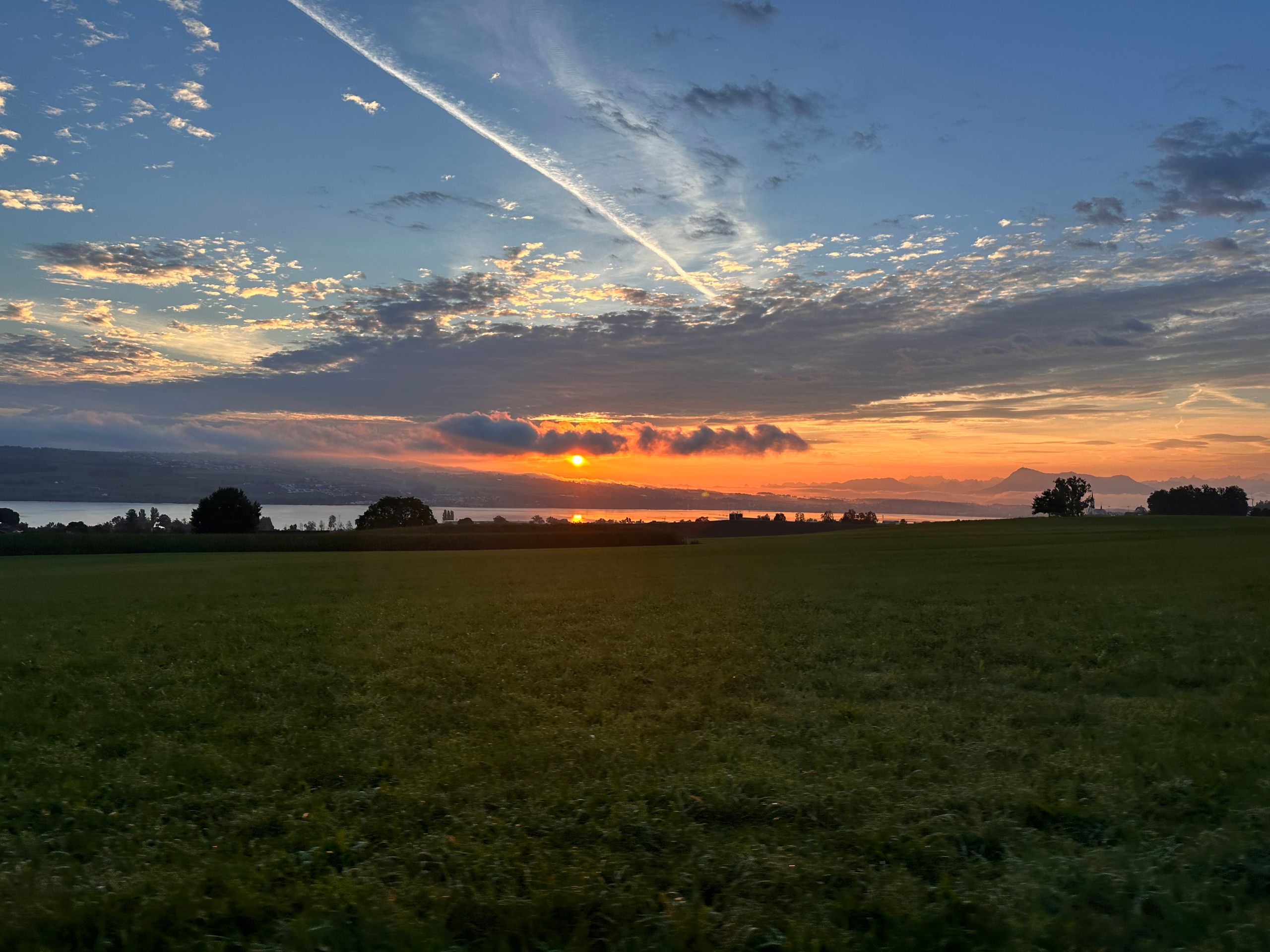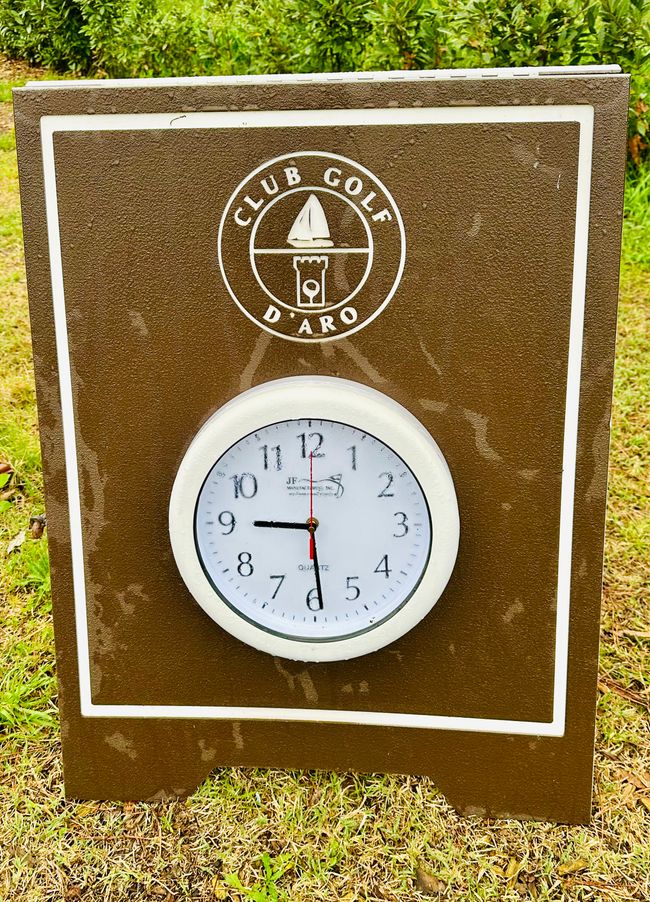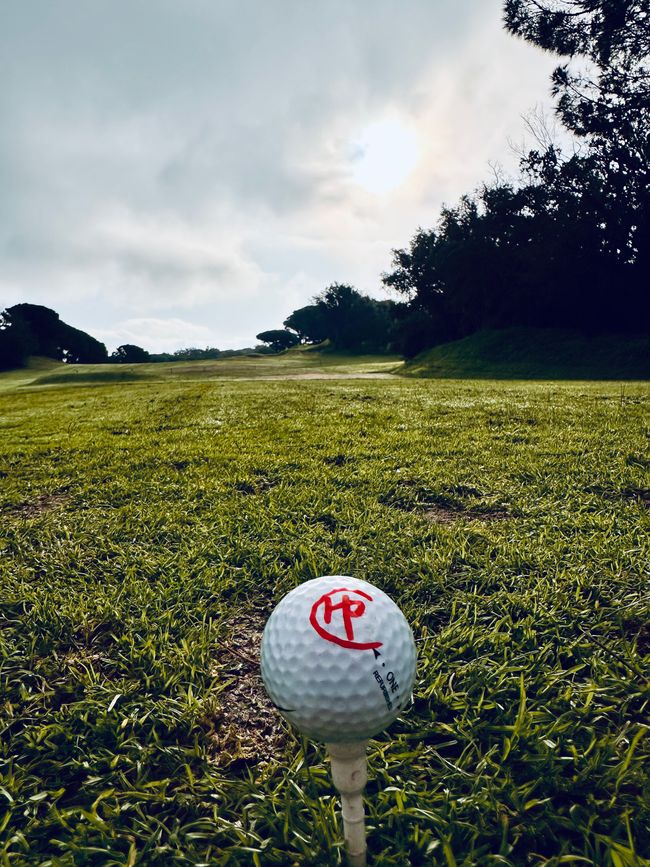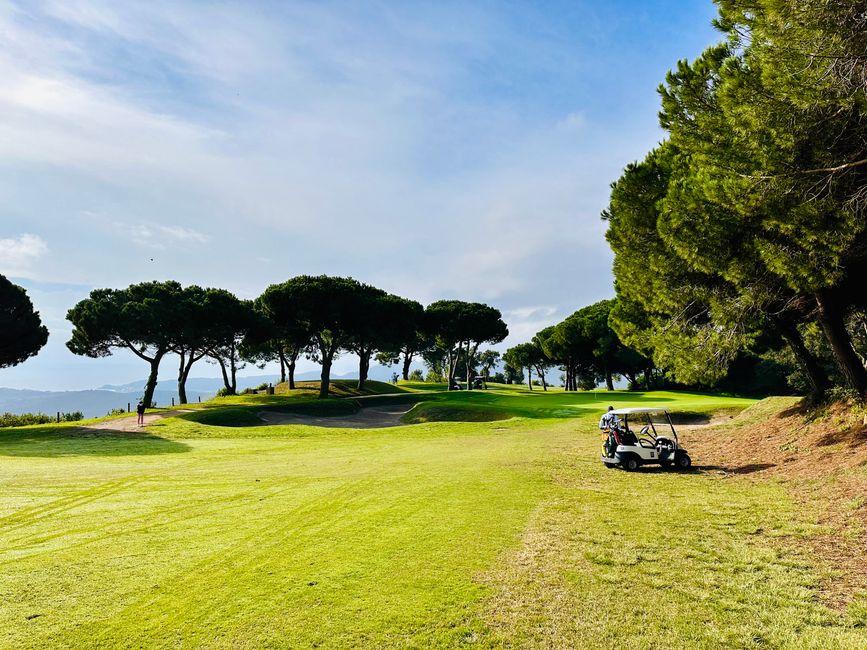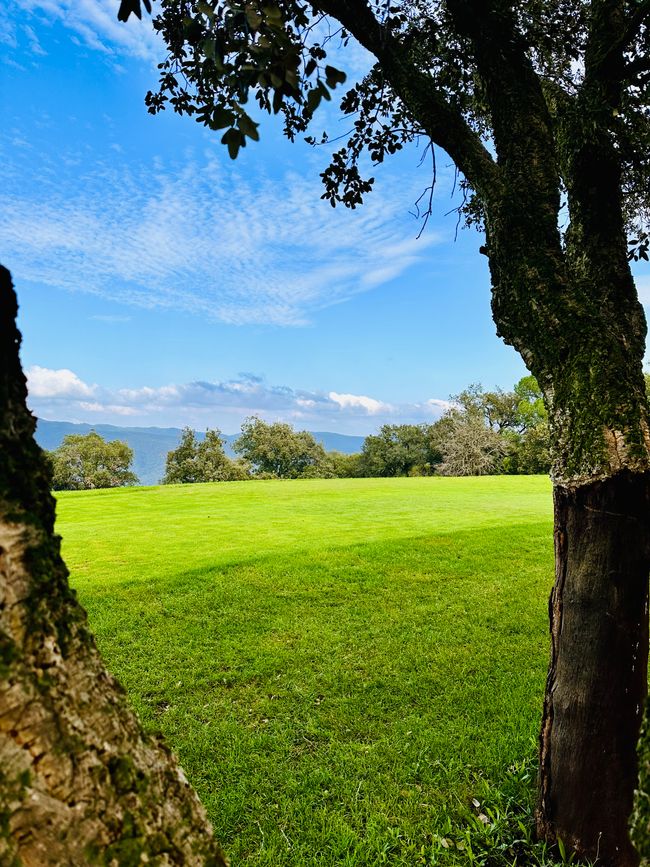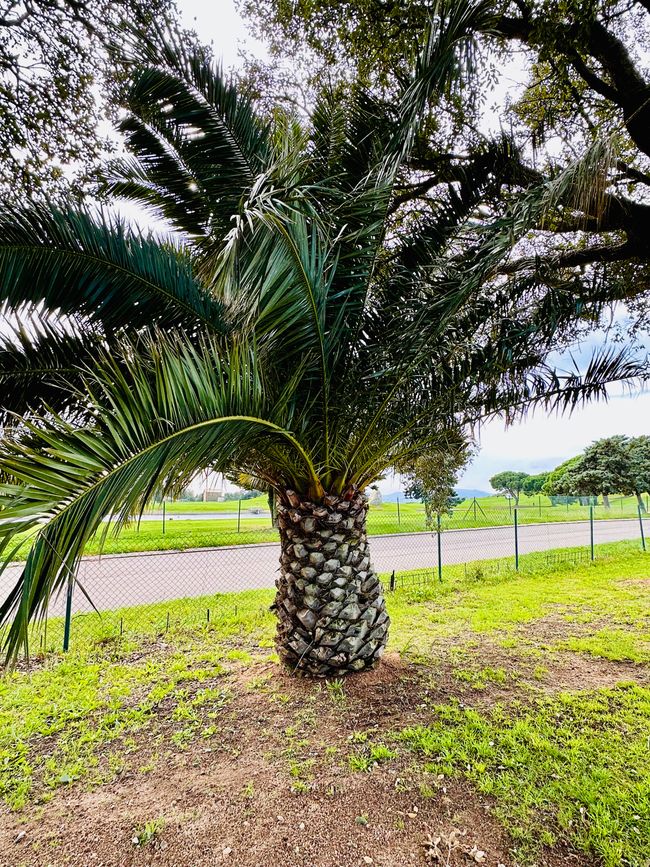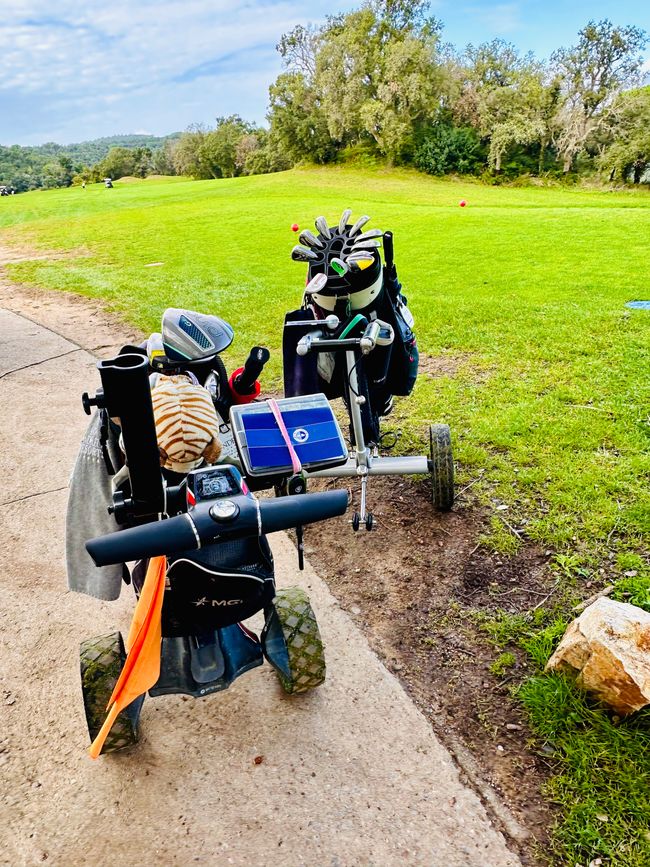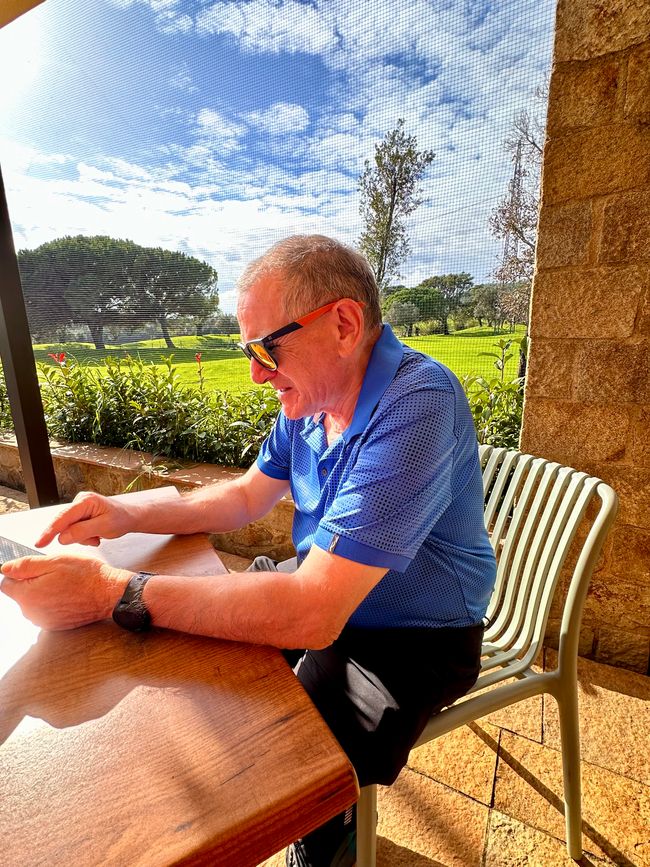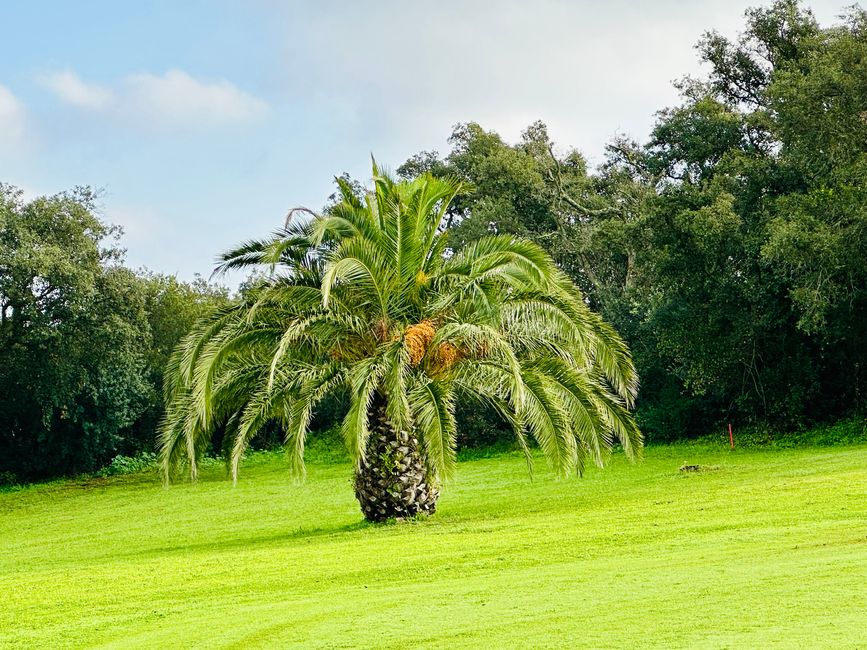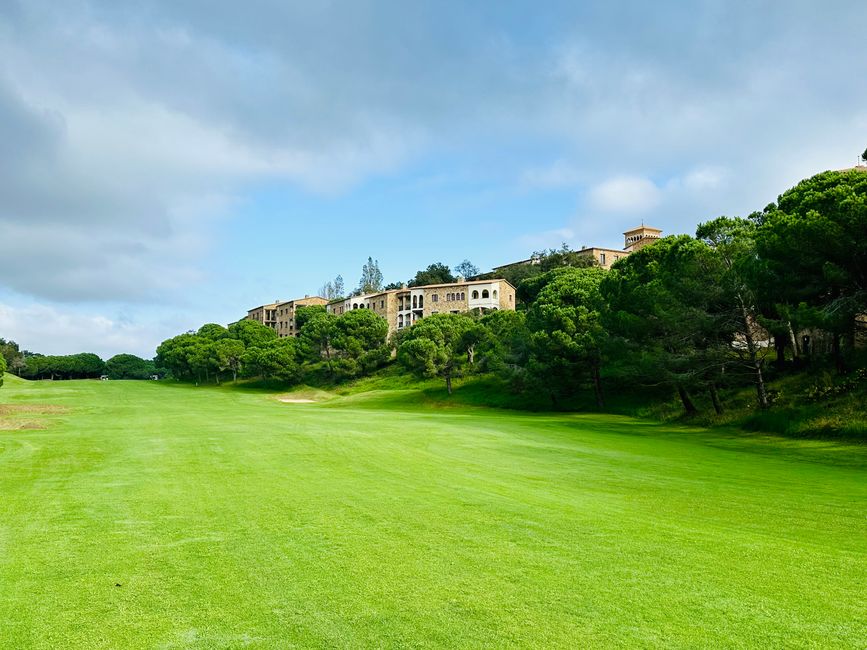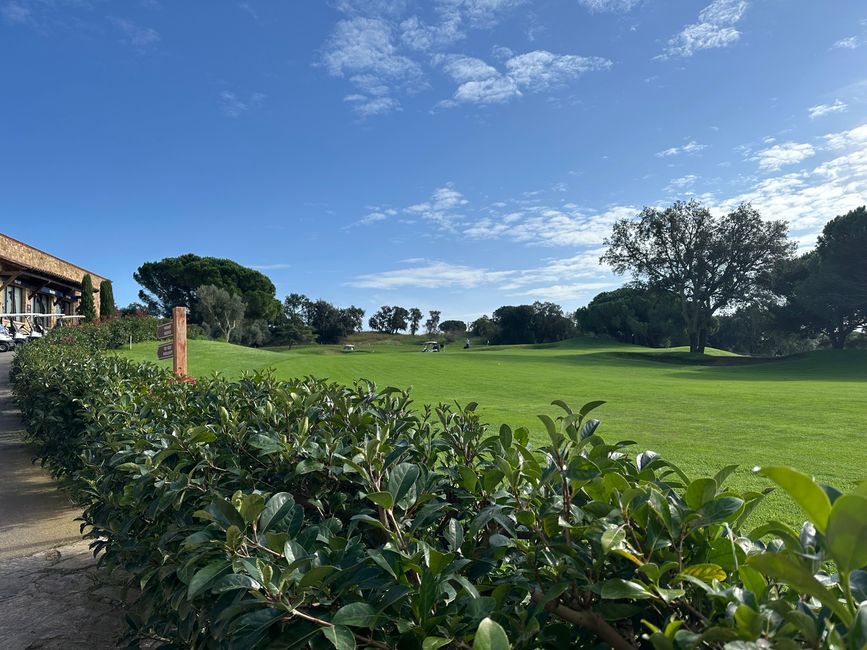
compostellas-herbstzeit
vakantio.de/compostellas-herbstzeit
Golf d'Aro - Round 7
प्रकाशित भइल बा: 02.11.2024
न्यूजलेटर के सब्सक्राइब करीं
After a week without golf, we are starting today for the 7th round at our home course, Golfclub d’Aro.

We have a tee time at 9:33 AM. There’s hardly anything nicer than starting the day on the golf course 😉 This morning, there was a special magic over the course - the dew still shone on the fairways, and the first rays of sunlight broke through the clouds amongst the trees. It promised to be a perfect golf day.
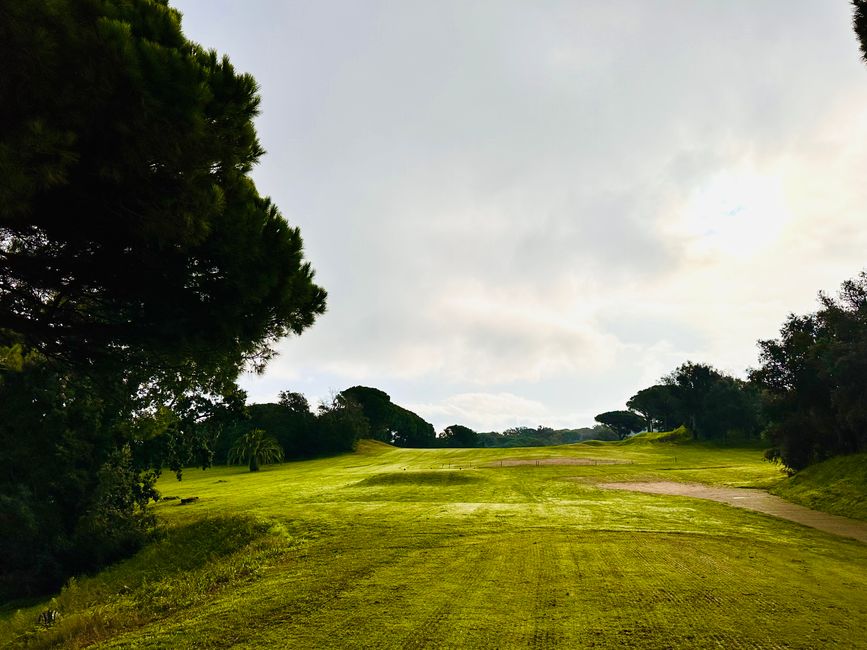
However, we start as a pair, as our golf partners were delayed and only joined us at hole 2.
The start was somewhat sticky. It didn’t feel like everything was going to fit today. Golf is so technical that it requires consistent play and a lot of practice. A week without golf immediately affects my game. Unfortunately!
My drives were especially good at the beginning, but unfortunately turned against me as the game progressed. Today, there were challenges again - the bunkers, which were very hard due to the rain, almost drove me to despair.
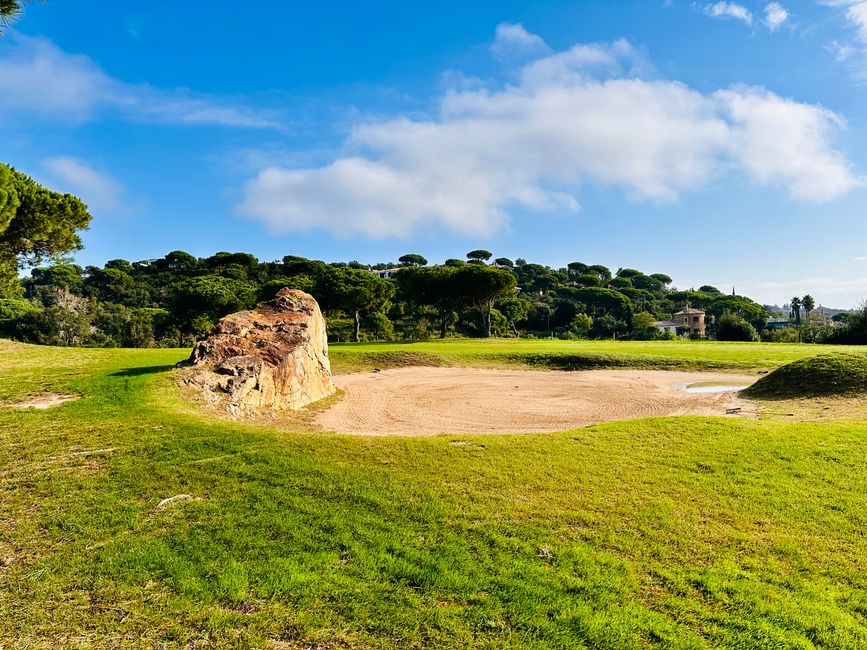
Our home course, Golf d’Aro, has these very special corners and edges that make it uniquely challenging. The partly large greens or hole 6, the most difficult hole, an incline, an ascent, and a large bunker in front of the green, which you can hardly see from the tee at first glance, always lead to surprises. However, it went well today!
Alongside the game, we always enjoy the nature around the course. Today, I reached the thirteenth hole and saw two turtles enjoying the sun again.
Although I couldn’t play to my handicap today, I thoroughly enjoyed the round and the sun. More importantly, the pace was brisk today and we had plenty of time to enjoy the sun on the terrace of “Forat 19” with a glass of rosé, olives, and tapas.
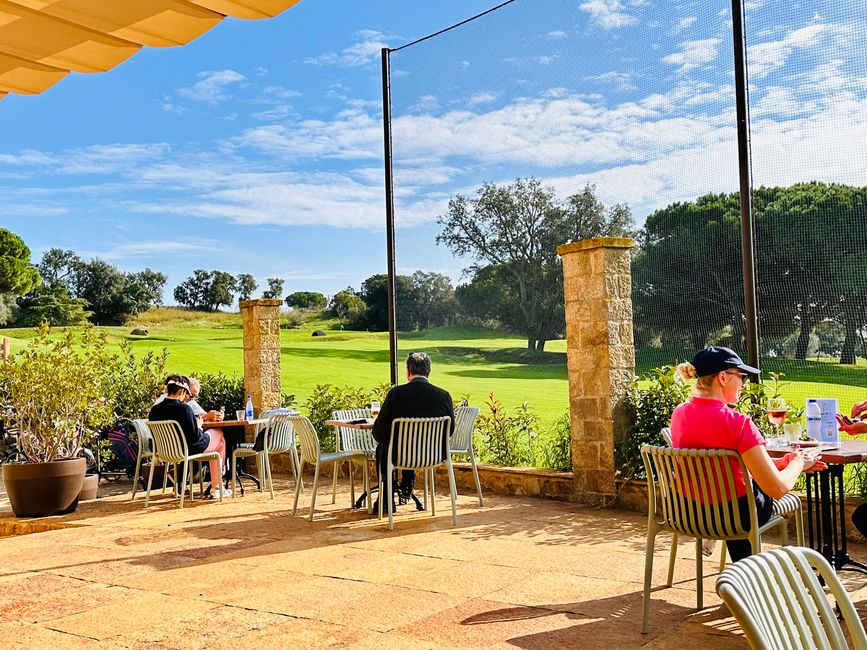
One challenge when ordering is the language, even though many Catalans can speak French well. The menus are in Catalan, which can mostly be inferred from my knowledge of French, but it doesn’t really work with Spanish. But what differentiates the two languages? Personally intrigued, I did a bit of research. Here’s a little excursion.
Some of you might be surprised, but Catalan and Spanish are two different Romance languages! They differ in their grammar, vocabulary, and pronunciation.
Spanish is the official language of Spain and is spoken in most regions. Additionally, it is widely spoken in many Latin American countries as well as parts of the USA (e.g., in California, Texas).
Catalan is spoken in Catalonia, Valencia, the Balearic Islands, eastern Aragon, as well as in Andorra and the Roussillon region in France.
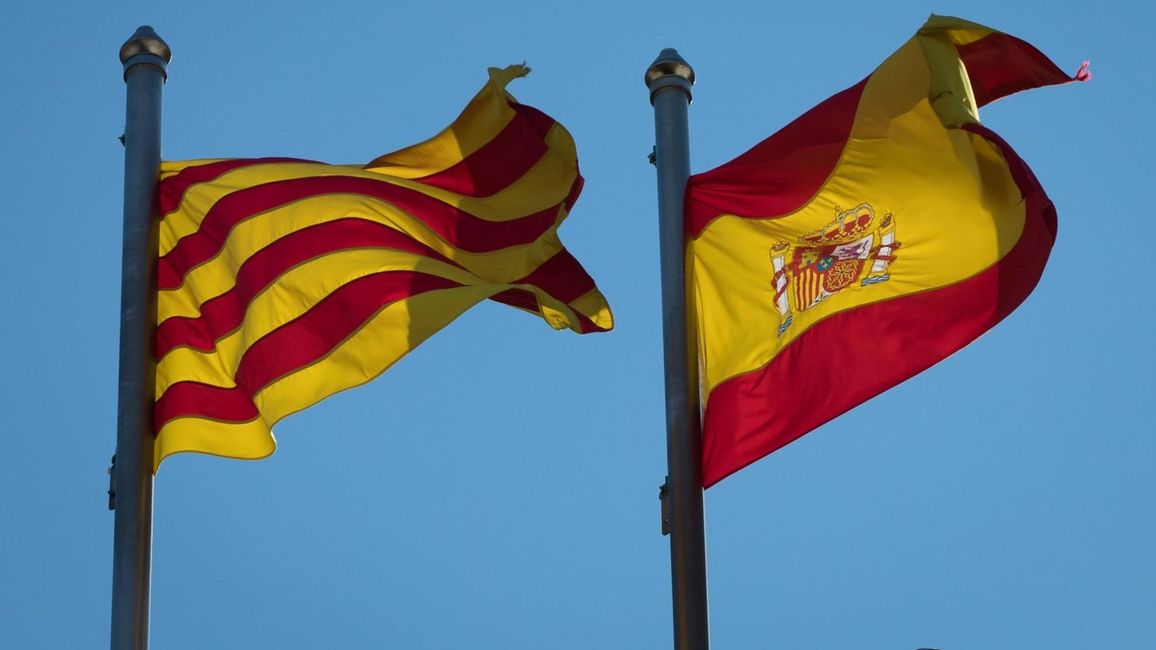
In Spain, Spanish is the official language at the national level. Catalan is a co-official language in Catalonia, Valencia (where it is often referred to as Valencian), and the Balearic Islands.
Catalan has some grammatical similarities with French, as is evident in the use of certain prepositions or pronouns. Spanish, on the other hand, has a different verb conjugation and sentence structure.
Spanish has clear, relatively evenly distributed vowels and tends to have a “flowing” pronunciation. Catalan, on the other hand, has a different vowel formation that approaches French more closely.
Although both languages use the Latin alphabet, there are differences in vocabulary and spelling. Many words in Catalan are derived more from Latin or Occitan and are less influenced by the Arabic influences that are more common in Spanish.
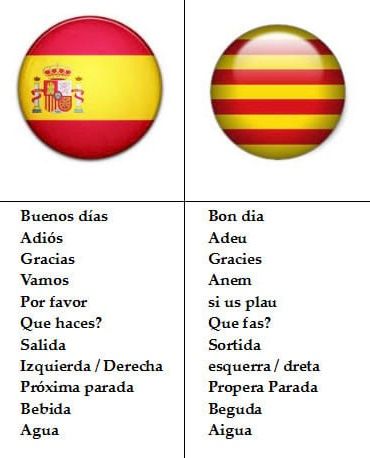
It is striking that in Catalan many words and place names are spelled with a double L. The double L is common in Catalan and has a special meaning there. In Catalan, there are many words containing “ll” which in Spanish have a single “l” or a different spelling, for example, Catalan: “llibre” – Spanish: “libro” (book).
The double “L” has a more significant and clearer role in Catalan than in Spanish, both in pronunciation and in writing. It is a hallmark of many Catalan words, whereas it occurs less frequently in Spanish and is often pronounced as a “y” sound.
Almost all Catalans speak Spanish as they learn it in school and everyday life. Bilingualism is widespread in Catalonia and an essential part of cultural life. However, Catalan and Spanish are two different languages with their own history, vocabulary, and grammatical peculiarities. While they are closely related and share many similarities, they are distinct languages.
The day comes to an end and the sun gives us a brief moment before it sets.
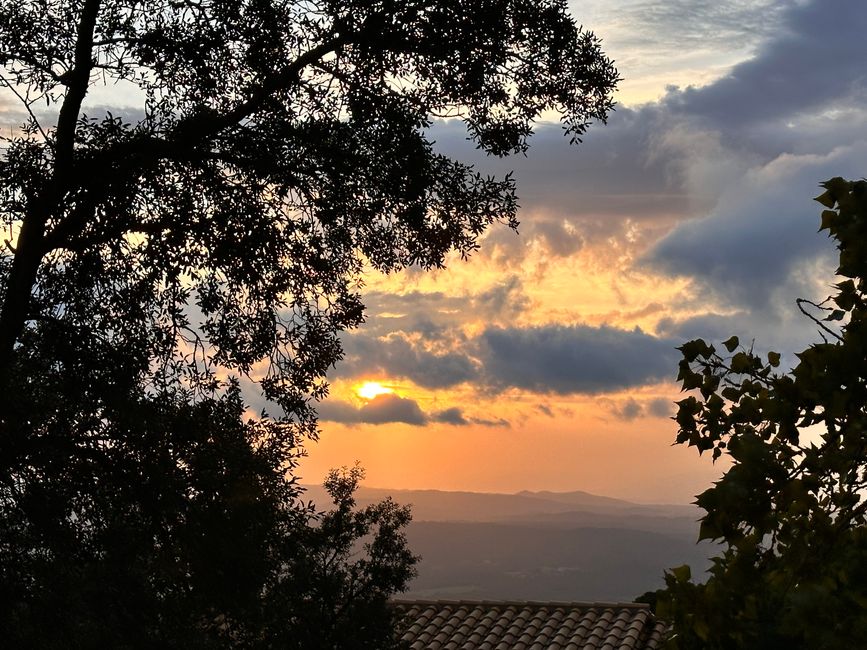
न्यूजलेटर के सब्सक्राइब करीं
जबाब (1)
Lisa
Liebe Katrin
So schön, wie du schreibst- immer toll deine spannende Recherchen zu lesen
Herzlichen Gruss
Lisa 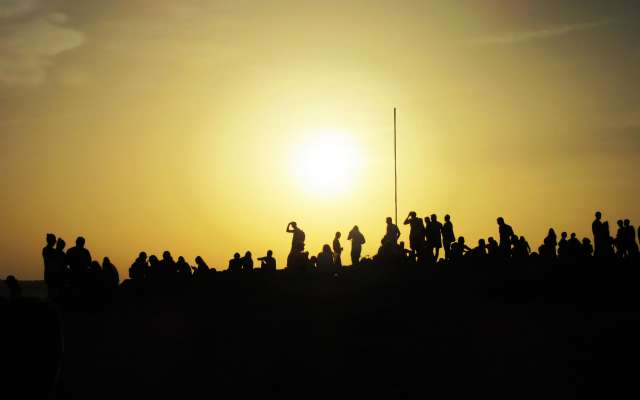
यात्रा के रिपोर्ट स्पेन के ह बा।
